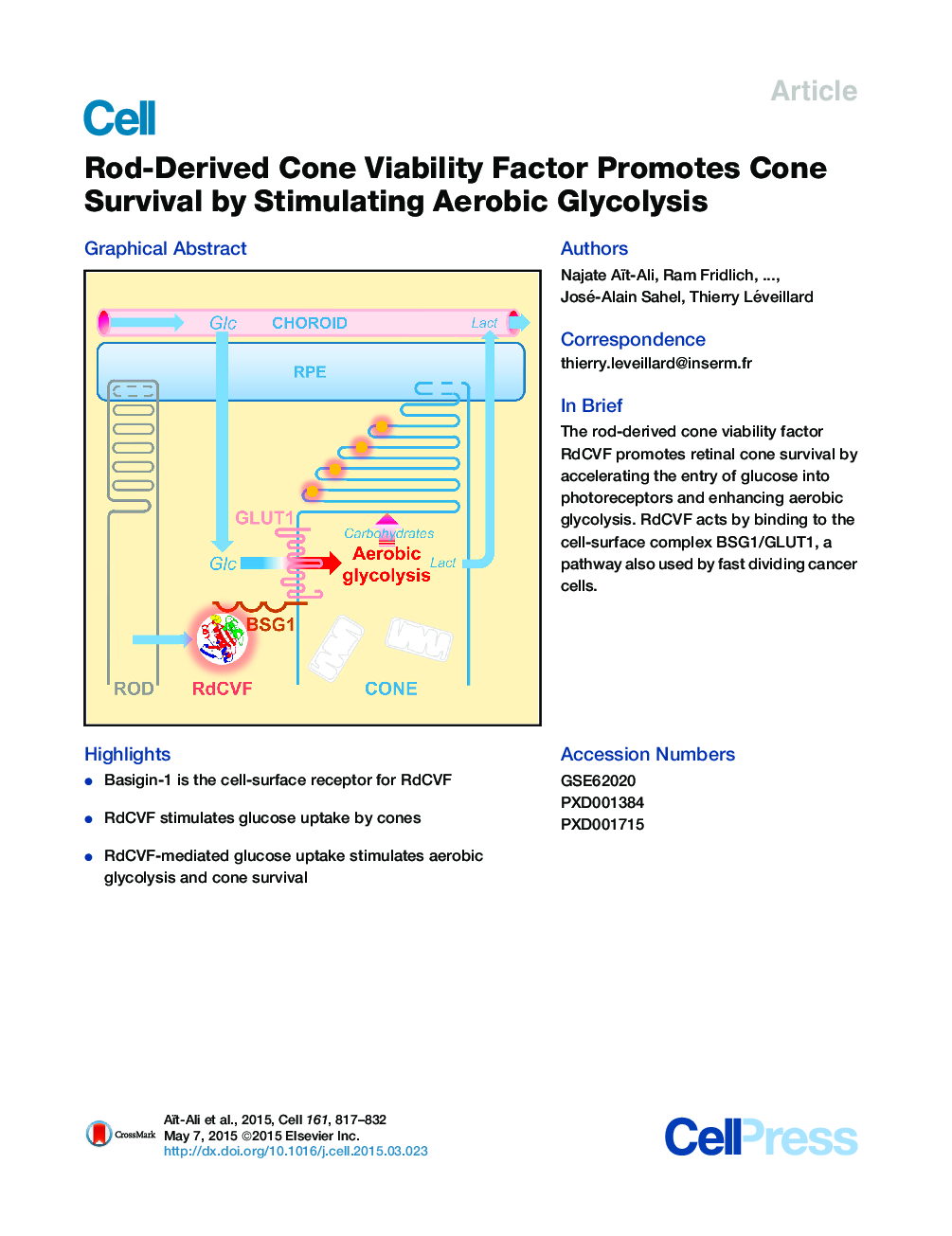| Article ID | Journal | Published Year | Pages | File Type |
|---|---|---|---|---|
| 2035264 | Cell | 2015 | 16 Pages |
•Basigin-1 is the cell-surface receptor for RdCVF•RdCVF stimulates glucose uptake by cones•RdCVF-mediated glucose uptake stimulates aerobic glycolysis and cone survival
SummaryRod-derived cone viability factor (RdCVF) is an inactive thioredoxin secreted by rod photoreceptors that protects cones from degeneration. Because the secondary loss of cones in retinitis pigmentosa (RP) leads to blindness, the administration of RdCVF is a promising therapy for this untreatable neurodegenerative disease. Here, we investigated the mechanism underlying the protective role of RdCVF in RP. We show that RdCVF acts through binding to Basigin-1 (BSG1), a transmembrane protein expressed specifically by photoreceptors. BSG1 binds to the glucose transporter GLUT1, resulting in increased glucose entry into cones. Increased glucose promotes cone survival by stimulation of aerobic glycolysis. Moreover, a missense mutation of RdCVF results in its inability to bind to BSG1, stimulate glucose uptake, and prevent secondary cone death in a model of RP. Our data uncover an entirely novel mechanism of neuroprotection through the stimulation of glucose metabolism.
Graphical AbstractFigure optionsDownload full-size imageDownload high-quality image (202 K)Download as PowerPoint slide
